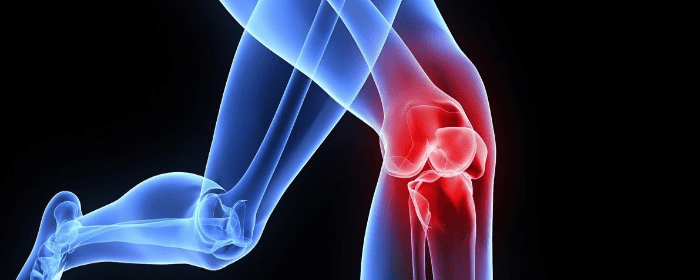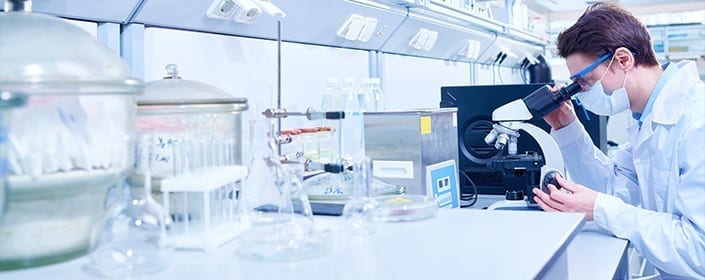
by admin | Dec 31, 2021 | Stem Cell Therapy, Diabetes, Mesenchymal Stem Cells, Stem Cell Research
According to recent data from the CDC, an estimated 30 million Americans currently have type 2 diabetes mellitus (T2DM), and another 88 million are considered to be prediabetic[1].
Occurring most often as a result of being overweight and/or sedimentary and often resulting in severe kidney, heart, or vision issues, T2DM has demonstrated to be difficult to treat, often resulting in life-long insulin therapy as the primary method of treatment.
Considering the negative impacts associated with insulin treatment, and T2DM in general, Liu, et al.’s research explores the potential of specific mesenchymal stem cells (MSCs) in the treatment of the condition.
Recently, stem cell therapy has been shown to be beneficial in improving glycemic control and beta function. Building off of these findings, Liu, et. al designed this study to specifically examine the efficacy and safety of Wharton’s Jelly mesenchymal stem cells transplantation (WJ-MSC) as a therapeutic option for those with T2DM.
The authors’ single-center phase I/II study involved observing 22 patients with T2DM for 12 months after receiving two injections of WJ-MSC (one intravenously and one intrapancreatic endovascularly). Over the course of the 12-month observation period, the participants were monitored with primary endpoints observed including changes in the levels of glycated hemoglobin and C-peptide and secondary endpoints including insulin dosage, fasting blood glucose, post-meal blood glucose, inflammatory markers, and T lymphocyte counts.
At the conclusion of this study, Liu et al. found that both glycated hemoglobin and fasting glucose levels demonstrated a progressive decline after WJ-MSC transplantation and over the course of the 12-month follow-up period, the suggested potential of long-lasting effects of the WJ-MSC treatment. Researchers also observed a general improvement in fasting C-peptide levels. Secondary endpoint observations over the course of the 12-month follow-up included improved beta-cell function and reduced markers of systemic inflammation and T lymphocyte counts.
While there were no significant adverse observed effects associated with either of the WJ-MSC injections, the authors did note isolated and separate incidences of mild fever, nausea, and headache in a very small number of participants – all of which spontaneously resolved within a week of onset. The authors also noted a temporary decrease in levels of C-peptide and beta-cell function one month after treatment, possibly related to the intrapancreatic endovascular injection. As a result of these observations, the authors call for further investigation of the safety of intrapancreatic endovascular delivery of WJ-MSC.
As a result of this research, Liu et al. concluded that their findings suggest the possible therapeutic potential of WJ-MSC transplantation for treatment of T2DM and specifically with improved beta-cell function, systemic inflammation, and immunological regulation. The authors also call for further large-scale placebo-controlled clinical studies to fully understand the safety and efficacy of WJ-MSCs in the treatment of T2DM. Source: “PMC – NCBI.” https://www.ncbi.nlm.nih.gov/pmc/articles/PMC4055092/
[1] “Type 2 Diabetes | CDC.” https://www.cdc.gov/diabetes/basics/type2.html. Accessed 22 Jan. 2022.

by admin | Oct 17, 2019 | Aesthetics, Hair Regrowth, Stem Cell Therapy
Androgenetic alopecia is the medical term for pattern baldness. Pattern baldness can manifest in several ways such as a receding hairline, a bald spot in the crown of the head, and/or generalized thinning hair. Pattern baldness is the most common form of hair loss. Approximately 4 out of 5 men will experience some degree of androgenetic alopecia by the time they reach age 70. Androgenetic alopecia affects a substantial number of women as well. Pattern baldness is not lethal, but it can create substantial amounts of psychological suffering and greatly diminishes the quality of life for both men and women.
The two first-line treatments for androgenetic alopecia in men are finasteride or minoxidil. Finasteride is an oral medication, while minoxidil is topical, i.e. it is placed on this directly on the scalp. These baldness treatments are modestly effective in a certain percentage of men. Patients may also be treated with dutasteride, light therapy, platelet-rich therapy, or surgery. Minoxidil is the main form of treatment for women with androgenetic alopecia. If minoxidil fails to help regrow hair or stop the balding process, women may alternate treatments including spironolactone, finasteride, cyproterone acetate, or flutamide. As with male pattern baldness, female pattern baldness is somewhat resistant to treatment, leaving most women to cover their baldness with wigs or concealers.
One important observation about androgenetic alopecia is that while the number of hair follicle stem cells remains the same in people who are balding, the number of more actively proliferating progenitor cells drops dramatically. In other words, it is theoretically possible to treat androgenetic alopecia with hair follicle stem cells that contain actively proliferating progenitor cells.
Indeed, researchers recently tested this hypothesis in a group of 11 patients with androgenetic alopecia. The researchers collected a bit of tissue from each patient and then purified the sample to collect hair follicle stem cells with actively proliferating progenitor cells. The doctors then injected those stem cells into balding areas on the patients’ scalps. For comparison, some were treated with a placebo injection, i.e. saltwater.
Patients treated with hair follicle stem cells enjoyed a 29% increase in hair density over the treated area. by contrast. Patients treated with placebo had less than a 1% increase in her density over the same time period. The researchers also noticed that they were substantially more stem cells in and around hair follicles in balding areas.
The authors of this research concluded that isolated cells are capable of improving hair density in patients with androgenetic alopecia. While additional, larger studies are needed to confirm these results, the current study provides strong evidence that bald and balding patients may benefit from autologous stem cell treatment.
Reference: Gentile P. et al. (2017). Stem cells from human hair follicles: first mechanical isolation for immediate autologous clinical use in androgenetic alopecia and hair loss. Stem Cell Investigation. 2017 Jun 27;4:58.

by admin | Aug 29, 2019 | Age Management, Mesenchymal Stem Cells, Stem Cell Therapy
Cognitive aging describes the changes to our ability to think, remember, and process information that occurs as we age. Cognitive aging begins in adulthood and progresses—if not accelerates—in old age. Over time, the speed at which we process information in the brain slows down, our ability to pay and maintain attention decreases, and we have a harder time making and recalling new memories. While some view cognitive aging as normal because it occurs in all of us, others acknowledge that cognitive aging is something that interferes with a person’s ability to function and diminishes the quality of life.
Currently, there are very few things that can slow cognitive aging and essentially nothing that can reverse it. Physical exercise, mental activity, and a healthful diet can modestly preserve cognitive function as we age. However, once aging occurs in the brain, there is nothing that we can do—currently—to change it.
Some innovative scientists are trying to change that, however. They are focusing on the changes in the brain that take place during aging and using stem cells to reverse that process.
A group of neuroscientists focused their efforts on memory and on the hippocampus, which is the main region of the brain that is responsible for memory. Researchers collected clinical-grade, mesenchymal stem cells taken from human umbilical cords and infused them into aging mice. Aging mice received stem cell treatment once every two weeks for several months.
After three months of treatment with umbilical cord-derived mesenchymal stem cells, mice showed significant improvement in learning and memory tests. Treated mice also had a remarkably improved function in the hippocampus. Surprisingly, stem cell treatment also created new brain cells (i.e. neurogenesis). Indeed, stem cell transplantation in aging mice actually reversed changes in the brain associated with cognitive aging.
These results were conducted in mice and not in humans, however, this research offers a strong foundation for conducting clinical human studies. If these improvements in memory and brain health could be shown in humans, it would be a groundbreaking study. Even in its current form, this research is an exciting breakthrough for the fields of stem cell medicine, neuroscience, and the neurobiology of cognitive aging. It suggests that mesenchymal stem cells may one day be able to reverse cognitive aging.
Reference: Cao N. et al. (2017). Clinical-grade human umbilical cord-derived mesenchymal stem cells reverse cognitive aging via improving synaptic plasticity and endogenous neurogenesis. 2017 Aug 10;8(8):e2996.

by admin | Dec 29, 2018 | Mesenchymal Stem Cells, Osteoarthritis, Stem Cell Therapy
Most large joints of the body contain cartilage, a substance that is softer and more flexible than bone. Because of its softness and flexibility, cartilage is well-suited to protect the bones as they move across one another. Unfortunately, this softness and flexibility also makes cartilage prone to injury and erosion. In patients with osteoarthritis, forexample, cartilage breaks down to the point that bone rubs against bone,causing pain and disability. Certain injuries can damage the cartilage (i.e.osteochondral lesion), which can essentially have the same effect.
Once the cartilage of joints has become damaged, there is
little that can be done to fix it. Patients may receive steroid injections into
the joint to reduce inflammation, and may rely on pain medications to relieve
the pain and swelling. Short of joint replacement therapy, no treatments can
reverse cartilage damage once it has occurred.
Fortunately, mesenchymal stem cells may soon be able to reverse cartilage defects that arise from osteochondral lesions and osteoarthritis. Wakitani and colleagues took samples of patients’ bone marrow, which contains mesenchymal stem cells. They then used various laboratory techniques to increase the number of stem cells in the sample. Four weekslater, the researchers then reinjected the concentrated stem cells back intothe same patient using their own source of stem cells. The Wakitani groupshowed that stem cell transplantation improved the patient’s clinical symptoms bysix months, a benefit that continued for two years on average. Samples takenfrom the patients 12 months later showed that the damaged cartilage had beenrepaired. In other work, Centeno and co-authors showed that bone marrow-derived mesenchymal stemcells could increase the volume of cartilage, reduce pain, and increase rangeof motion 24 weeks after stem cell transplantation.
Research continues to determine which stem cells are most useful, how many stem cells should be injected, how many injections need to be administered, and how should those stem cells be prepared before they are injected? Nonetheless, certain groups are making great strides in this area. In fact, the recent discovery of human skeletal stem cells promises to accelerate stem cell research into treating disorders of bone and cartilage.
Reference
Schmitt et al. (2012). Application of Stem Cells in Orthopedics. Stem Cells International. 2012: 394962

by admin | May 9, 2016 | Studies
Both Hyperbaric Oxygen (HBO) treatment and Mesenchymal Stem Cells (MSC‘s) have been used as interventions for patients suffering from Traumatic Brain Injury (TBI). Though each of these therapeutic approaches can confer benefits to patients, researchers have shown that combining the two techniques can yield better results for this population of patients than either method can achieve alone. The scientists published their findings in Neural Regeneration Research earlier this year.
The transplantation of MSC‘s and the use of HBO are each effective in treating TBI for different reasons. Mesenchymal stem cells can proliferate rapidly, differentiate into many different types of cells, and do not tend to cause adverse immune reactions. While HBO treatment can enhance the brain’s aerobic metabolism, providing brain tissue with more oxygen. All of these effects are helpful after TBI has occurred. However, MSC‘s alone can be limiting in their therapeutic potential because only a fraction of those that are transplanted differentiate into mature brain cells. Because hyperbaric oxygen treatment both protects injured tissue and also supports the differentiation and migration of MSC‘s, researchers hypothesized that combining the therapies would improve lead to better neurological and cognitive outcomes following TBI than either treatment would alone.
To test their idea, the scientists induced TBI in rats to establish a rat model of the condition. They then treated one group of rats with just HBO, transplanted MSC‘s in another group of rats that did not undergo HBO, and used both interventions in a final group of rats. The researchers then looked both at physiological markers associated with TBI, as well as cognitive performance on a learning and memory task.
The results showed that rats that underwent both MSC‘s transplantation and HBO had better neurological outcomes and better cognitive performance scores than rats that endured only one type of treatment. Given these promising findings in an animal model of TBI, future research will likely address the translatability of these findings to humans. Now that a proof-of-concept exercise has been successful, there is significant support for the potential of this combination treatment regimen to help people who experience TBI.
Reference
Zhou, H. X., Liu, Z. G., Liu, X. J., & Chen, Q. X. (2016). Umbilical cord-derived mesenchymal stem cell transplantation combined with hyperbaric oxygen treatment for repair of traumatic brain injury. Neural Regen Res, 11(1), 107-113. doi: 10.4103/1673-5374.175054






 St. Petersburg, Florida
St. Petersburg, Florida
